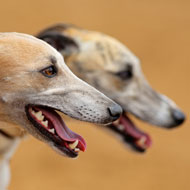Study reveals rabid bats have cooler faces
A study has revealed that once a bat has become infected with rabies its face will see a drop in temperature and will appear cooler compared to uninfected colony-mates.
Researchers are hopeful that this discovery will help determine infected bats through thermal scans and improve rabies surveillance in wild colonies. This in turn should help to prevent further outbreaks in other animals – including humans.
According to the Centers for Disease Control and Prevention (CDC), bats are a reservoir for the rabies virus and have been known to transmit their strains to other animals, potentially putting humans at risk.
Rabies Specialist James Ellison and his colleagues at the CDC studied a captive colony of big brown bats to test the hypothesis. After previous studies on rabid racoons indicated a rise in temperature in the nose they expected the same result.
The researchers established normal temperature ranges for the bats and then injected 24 individuals with the virus. The 21-day study monitored facial temperatures with infrared cameras, and 13 of the 21 bats that developed rabies showed temperature drops of more than 4ºC.
"I was surprised to find the bats' faces were cooler because rabies causes inflammation, and that creates heat," said Ellison. "No one has done this before with bats."
The team are still unsure as to what causes the temperature change.
Although thermal scans didn't catch every instance of rabies in the colony, this method may be a way to detect the virus in bats before symptoms appear. The team plans to fine-tune their measurements of facial temperatures, and then Ellison hopes to try surveillance in the field.



 The Greyhound Board of Great Britain has published new vaccination guidance, with all greyhounds registered from 1 January, 2027 required to have the L4 leptospirosis vaccination, rather than L2.
The Greyhound Board of Great Britain has published new vaccination guidance, with all greyhounds registered from 1 January, 2027 required to have the L4 leptospirosis vaccination, rather than L2.